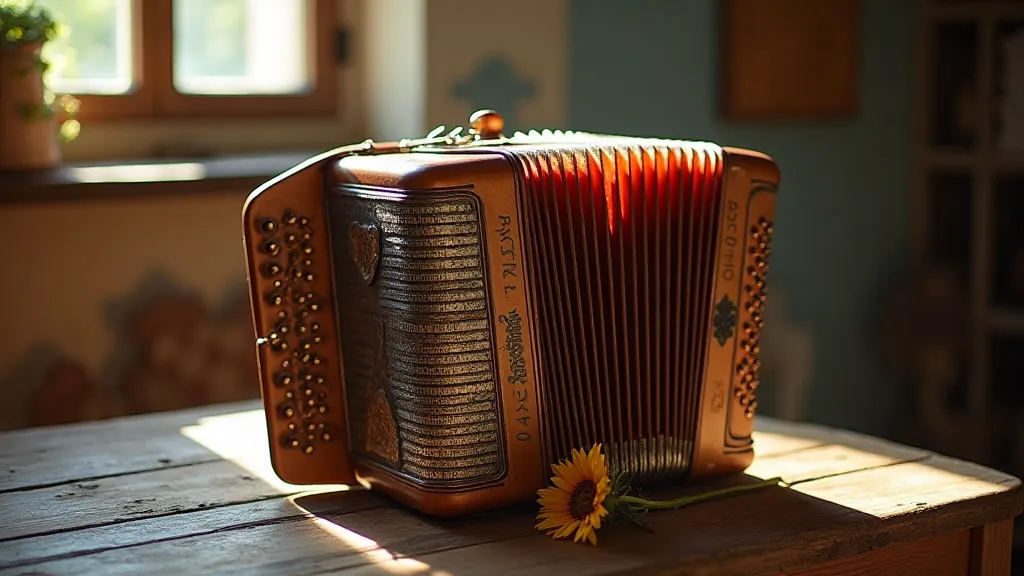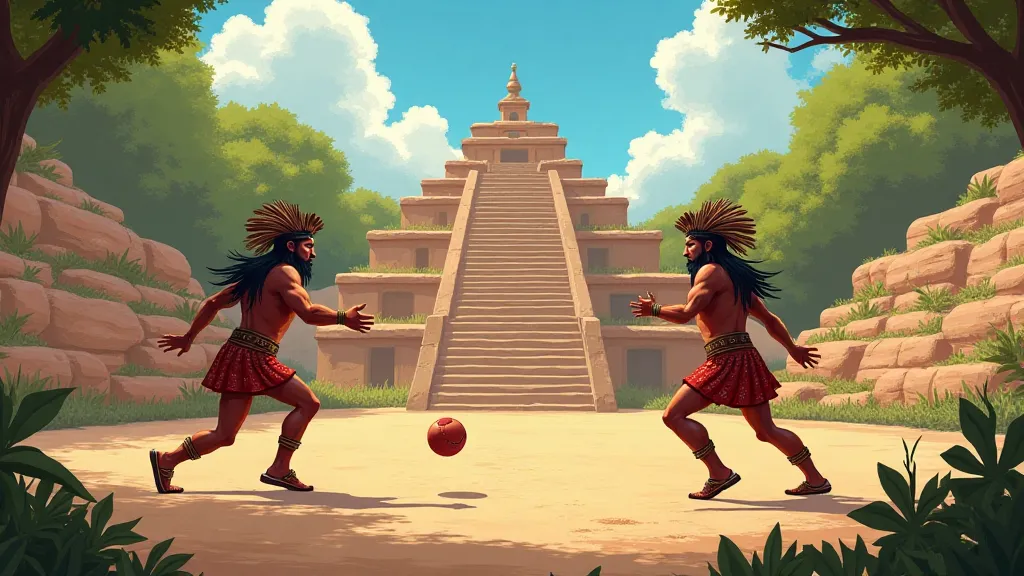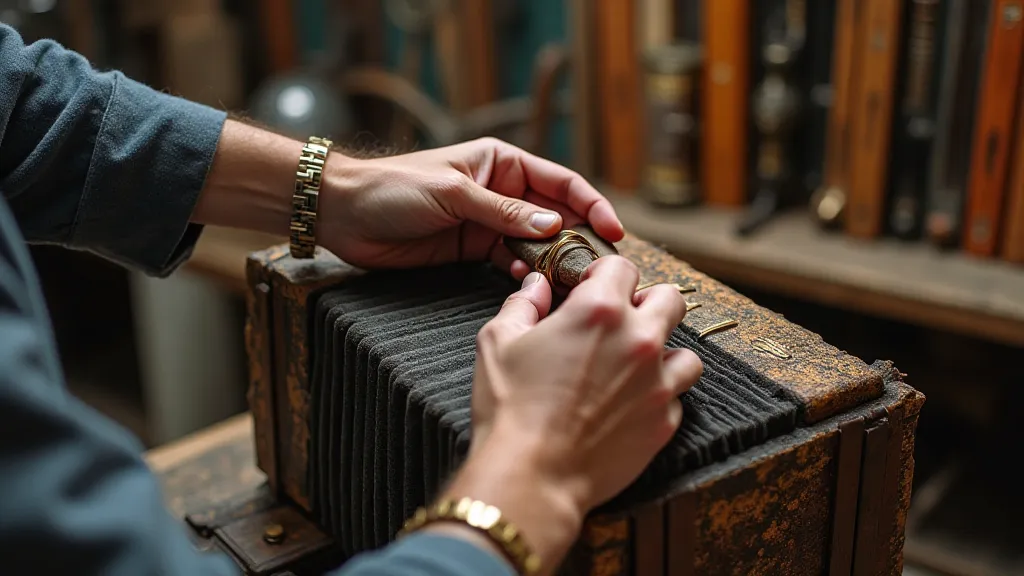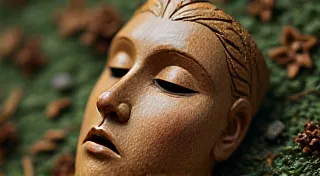The Weight of Ritual: Examining the Sacred in Play
There’s a particular weight to antique accordions, isn’t there? It's not just the physical heft of aged wood and bellows, but a feeling, a resonance of countless melodies echoing through generations. These instruments, often dismissed as mere entertainment, frequently held – and still hold – a profoundly sacred role within specific cultures. To understand regional traditional games, it’s crucial to recognize that they aren't simply pastimes; they are often intricate tapestries woven with threads of religious belief, harvest festivals, and deeply held cultural identity. The act of play, in these contexts, becomes a ritual, a form of prayer, a connection to ancestors and the spirits of the land.
My grandfather, a stonemason from the remote Sicilian mountains, possessed an accordion. It wasn’t a particularly fancy instrument – a simple diatonic model, worn smooth by years of travel and sun exposure. I remember him playing it during the “Festa di San Giuseppe,” the feast day of Saint Joseph, our patron saint. The music wasn’s just lively; it was devotional. Every note seemed imbued with a fervent hope and gratitude. Later, I learned that the music itself was carefully chosen – specific tunes played to honor the saint and ensure a bountiful harvest. The games played alongside the music – variations of blind man's buff and rope-pulling contests – weren’t frivolous distractions. They were offerings, ways of demonstrating strength and unity as a community, proving their worthiness of divine blessing.

Games as Offerings: The Case of the Inuit Aqsaq
Consider the Inuit aqsaq, a complex and hypnotic drumming game that’s far more than just entertainment. For centuries, it served as a vital spiritual practice, particularly during the harsh winter months. Traditionally, aqsaq was played to induce trance states, allowing shamans to communicate with spirits and heal the sick. The rhythmic pounding of the sealskin drum, the chanted lyrics, and the synchronized movements of the players were all carefully orchestrated to create a powerful spiritual conduit. It's not surprising that its practice was restricted to specific individuals; the responsibility of accessing the spirit world was not something to be undertaken lightly. Today, while still performed, the profound spiritual significance is often lost or diluted. However, understanding its historical context reveals the depth of connection between play and ritual in Inuit culture. The precise patterns and sequences are not simply learned; they are absorbed through a lifetime of observation and initiation.
Harvest and Prosperity: Southeast Asian Ring Games
Across the globe, in Southeast Asia, particularly in countries like Thailand, Laos, and Vietnam, ring games often hold profound connections to harvest festivals and agricultural cycles. These games, typically involving a group of players standing in a circle and passing a ring or object while singing a song, symbolize the cyclical nature of life, death, and rebirth – concepts deeply intertwined with the agricultural calendar. The singing and the passing of the ring represent the nurturing of the land and the hope for a plentiful yield. Often, the songs themselves tell stories of ancestral spirits and the blessings they bestow upon the community. The act of circling itself is significant, mirroring the sun's journey and the cyclical pattern of the seasons. Refusing to participate, or failing in the challenge set by the ring game, could be seen as disrespecting the spirits and jeopardizing the harvest.
The craftsmanship inherent in these games is also noteworthy. The rings themselves might be painstakingly crafted from natural materials like bamboo, rattan, or even precious metals depending on the status and prosperity of the community. The songs, passed down orally through generations, are not simply tunes; they are intricate poems full of symbolism and nuance. Learning these games requires not just physical dexterity but also a deep understanding of the cultural values they embody. The skill of the players isn't merely judged on their ability to successfully complete the game, but on the reverence and respect they show during the process.
The Ball Game of Mesoamerica: A Cosmic Drama
Perhaps one of the most striking examples of the sacredness of play can be found in the Mesoamerican ball game, known as ullamaliztli among the Aztecs and Maya. More than just a sport, it was a ritualistic drama played on specially constructed courts, often aligned with celestial events. The ball, made of solid rubber, represented the sun, and the players represented opposing forces – life and death, light and darkness. The game’s rules were complex, and the stakes were high. In some cases, the losing team – or even the winning captain – was sacrificed to the gods. The game mirrored the cosmic battle between these forces, and the players' actions were believed to influence the fate of the world. Even the construction of the courts itself involved intricate astronomical calculations, demonstrating the deep connection between the game and the spiritual realm.

Echoes of the Sacred: Modern Challenges and Preservation
As cultures evolve and globalization homogenizes traditions, many of these sacred games face the threat of being lost or reduced to mere entertainment. The profound spiritual meaning is often forgotten, and the games become stripped of their cultural significance. This isn't inherently negative; adaptation is a natural part of cultural evolution. However, it’s crucial to acknowledge the loss that occurs when these traditions fade. Efforts are being made in some communities to revitalize these games, to teach younger generations the history and meaning behind them, and to ensure that the connection to the sacred is not completely severed. This often involves elders acting as keepers of knowledge, meticulously passing on the rules, songs, and rituals associated with the games.
Interestingly, the restoration and collecting of antique accordions, like the one my grandfather played, can reflect this broader desire to preserve cultural heritage. Many collectors aren’t simply interested in acquiring a beautiful instrument; they are driven by a desire to connect with the history and traditions it represents. Each dent, each scratch, each worn key tells a story – a story of music, of community, and of a cultural identity that has endured through generations. Similarly, understanding the context of these traditional games, researching their history, and appreciating the craftsmanship involved is a way of honoring the cultures that created them. The act of playing, even if without the original spiritual weight, can still connect us to a lineage of players, artisans, and storytellers who came before us. It’s a reminder that play, at its best, is not just about amusement; it’s a powerful means of expressing, preserving, and celebrating the human spirit.
Perhaps my grandfather, playing his simple accordion under the Sicilian sun, understood this instinctively. He wasn't just playing music; he was carrying on a tradition, reaffirming his connection to his ancestors, and keeping the spirit of his community alive, one melody at a time.






